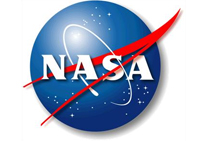New Educational Materials Available at NASA.gov 19 Feb 2012

The Educational Materials section of NASA’s Web site offers classroom activities, educator guides, posters and other types of resources that are available for use in the classroom. Materials are listed by type, grade level and subject. The following space science-related items are now available for downloading.
Aspire 2 Inspire Flier — All Grades
Science, technology, engineering and mathematics have long been perceived as being male-dominated areas. This flier describes a film that shows how women at NASA have made important and significant impacts in STEM fields. The flier also includes instructions for following the women on Twitter and watching the film on NASA.gov. A list of online resources provides access to information about NASA and community organizations.
http://www.nasa.gov/audience/foreducators/topnav/materials/listbytype/Aspire_2_Inspire_Flier.html
The Inverse Square Law of Light Activity — Grades 5-12
Students measure the relationship between distance and brightness of light. Once students discover the relationship, they can begin to understand how astronomers use this knowledge to determine the distances to stars and far away galaxies.
http://www.nasa.gov/audience/foreducators/topnav/materials/listbytype/Inverse_Square.html
Space Math VI — Grades 5-12
The problems in this booklet investigate science phenomena and mathematics applications such as molecules, the Keeling Curve, solar irradiance, fractions, percentages, solving for x, geometry and trigonometry. The problems are authentic glimpses of modern science and engineering issues, often involving actual research data. Each word problem includes background information. The one-page assignments are accompanied by one-page teachers answer keys.
http://www.nasa.gov/audience/foreducators/topnav/materials/listbytype/Space_Math_VI.html
Electromagnetic Math — Grades 6-12
Electromagnetic Math is designed to supplement teaching about electromagnetism. Students explore the simple mathematics behind light and other forms of electromagnetic energy including the properties of waves, wavelength, frequency, the Doppler shift, and the various ways that astronomers image the universe across the electromagnetic spectrum to learn more about the properties of matter and its movement. This collection of 84 problems provides a variety of practical application in mathematics and science concepts including proportions, analyzing graphs, evaluating functions, the inverse-square law, parts of a wave, types of radiation, and energy. Each one-page assignment includes background information. One-page answer keys accompany the assignments.
http://www.nasa.gov/audience/foreducators/topnav/materials/listbytype/Electromagnetic_Math.html
Space Weather Math — Grades 7-12
Students explore the way in which the sun interacts with Earth to produce space weather and the ways in which astronomers study solar storms to predict when adverse conditions may pose a hazard for satellites and human operation in space. Space Weather Math supplements the Space Weather Action Center site as students track a solar storm from the sun until it impacts our Earth’s magnetosphere. The variety of concepts in this 96-problem collection includes concepts such as sunspot cycles, solar flares, coronal mass ejections, graph analysis, unit conversions, linear equations and probability. Each word problem includes background information. The one-page assignments are accompanied by one-page teachers answer keys.
http://www.nasa.gov/audience/foreducators/topnav/materials/listbytype/Space_Weather_Math.html
Transit Math — Grades 5-8
Although planets, stars and other celestial bodies move through space in complicated ways, space is so vast that rarely do such bodies collide. However, when someone watches these movements from a distant vantage point, it sometimes looks as though collisions occur because of the perspective. The introduction of Transit Math clearly explains the apparent “collisions,” eclipses, transits and occultations to middle school students. The variety of concepts in this 44-problem collection includes synodic periods, planetary conjunctions, geometry, fractions, linear equations and probability. The problems are authentic glimpses of modern science and engineering issues, often involving actual research data. Each word problem includes background information. The one-page assignments are accompanied by one-page teachers answer keys.
http://www.nasa.gov/audience/foreducators/topnav/materials/listbytype/Transit_Math.html








